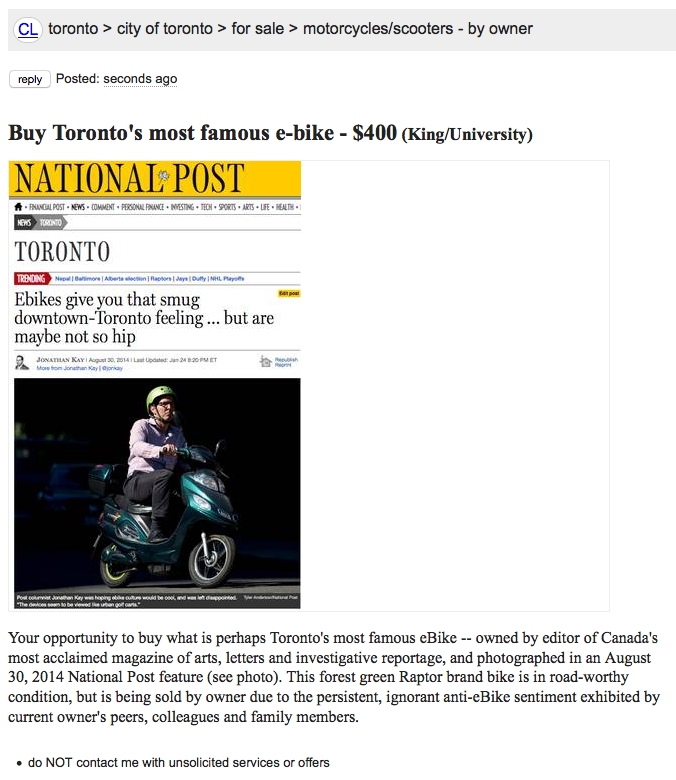Despite having become the editor-in-chief of The Walrus, poor Jonathan Kay suffers the slings and arrows of all those who condemn and ridicule his ridiculous choice of transportation ebike (especially from his own staff):
City planners think of transportation in terms of its logistical and infrastructural components. That’s also how the issue gets discussed in the context of, say, energy conservation and traffic management. But when it comes to the transportation products we actually buy, our utilitarian calculus is overwhelmed by our aesthetic biases. When the Segway scooter had its great reveal in 2001, few observers cared about its groundbreaking self-balancing technology. All they saw was a nerd standing upright, wearing a funny helmet.
It is a lesson I have learned again over the last year, at great cost in dignity and personal reputation, as I have motored around Toronto on an ebike — a zero-emission electric scooter that travels at speeds of up to 32 km/h. As I noted in an essay last year, ebikes combine the low cost and convenience of a bicycle, while allowing a user to get to work without an ounce of sweat or a stitch of lycra.
In a more perfect world, the streets of our cities would be humming with ebikes. But that is not the world we inhabit. After a year of evangelizing these fantastically useful, earth-friendly contraptions among my peer group, I’ve failed to gain a single new convert.
Just the opposite, in fact: I have become a figure of overt and willfully cruel mockery.





